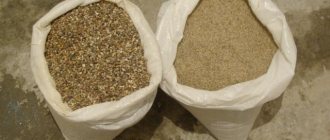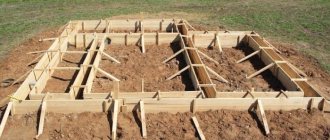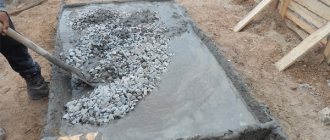The sand compaction coefficient (Kupl) is the most important technical parameter that must be taken into account when purchasing and using this bulk non-metallic material in a number of construction areas. Buyl makes it possible to compare the actual density of the material with its average (established in current regulatory documents) and maximum values.
Our company supplies all types of non-metallic materials, including sand, in the Leningrad region of St. Petersburg. For the client’s specific purposes, our qualified specialists are ready to calculate the sand compaction coefficient in accordance with SNIP and GOST standards.
Why is it important to know the compaction coefficient of sand and its bulk density when purchasing?
Most naturally mined non-metallic materials have a porous, non-monolithic structure. Therefore, such a heterogeneous granular mass in different states (at different stages of manipulation with it) shows unequal quantitative characteristics.
For a long time, accurately calculating the need for the same sand was a real problem until such a concept as the “sand compaction coefficient” appeared.
To be specific, even before the moment of direct functional use, the sand mass is subjected to several types of influences, namely:
- excavation, loosening, washing, sifting and dividing into fractions (extraction stage);
- warehousing (stage of storage and accumulation of material);
- repeated loosening (stage of loading into special equipment);
- tamping (transportation stage) and another loosening during unloading.
Depending on the time period of each stage, such an important indicator as sand moisture may change. As a result, the client receives material that has gone through the cycle of changes several times. What is most interesting is that sand is one of the most unpredictable materials in terms of the level of changes in its structure.
Therefore, for many customers who purchased material without taking into account its compaction coefficient and bulk density, the supply of sand in a “smaller volume” comes as a real surprise.
Relative compaction coefficient
Carrying out numerous procedures for extraction, transportation, and storage, it is obvious that the bulk density changes somewhat. This is due to the compaction of sand during transportation, long-term storage in the warehouse, absorption of moisture, changes in the level of looseness of the material, and grain size.
In most cases, it is easier to use a relative coefficient - this is the ratio between the density of the “skeleton” after mining or being in a warehouse to the one it acquires when reaching the final consumer.
Knowing the standard that characterizes the density during mining, indicated by the manufacturer, it is possible to determine the final coefficient of the soil without conducting constant surveys.
Information about this parameter must be indicated in the technical and design documentation. Determined by calculations and the ratio of initial and final indicators.
This method assumes regular deliveries from one manufacturer and no changes in any variables. That is, transportation occurs using the same method , the quarry has not changed its quality indicators, the duration of stay in the warehouse is approximately the same, etc.
To perform calculations, it is necessary to take into account the following parameters:
- characteristics of sand, the main ones are the compressive strength of the particles, grain size, caking ability;
- determination of the maximum density of the material in laboratory conditions when adding the required amount of moisture;
- bulk weight of the material, that is, density in the natural environment of location;
- type and conditions of transportation. The worst impact is on road and rail transport. Sand is less subject to compaction during sea deliveries;
- weather conditions when transporting soil. It is necessary to take into account humidity and the likelihood of exposure to sub-zero temperatures.
How to calculate density during excavation from a pit
Depending on the type of pit, the level of sand extraction, its density also changes. In this case, the climatic zone in which resource extraction work is carried out plays an important role. The documents define the following coefficients depending on the layer and region of sand production.
Compaction of sand during construction
Artificial compaction (tamping) of sand is one of the priority stages of using the material in construction.
Today there are a number of state standards in force: GOST 8736-93, 25100-95 and SNiP 2.05.02-85, which establish optimal ramming performance. They are graded within 0.95-0.98 Coupl.
Ignoring the requirements for compacting (tamping) sand can have the most negative consequences. The mass of such sand will subside over time, which in turn leads to subsidence of the foundation, the formation of holes, etc.
Our company’s specialists are ready to help with any questions related to calculating the sand compaction coefficient. We will supply high-quality material with mandatory purchase calculations.
Compaction coefficient of soil and sand
What is the sand compaction coefficient (Kupl) is known not only to specialists working in design organizations, but also to operators whose main activity is construction. It is calculated in order to compare the actual density in a certain area with the value prescribed by regulations. The compaction coefficient of bulk materials is an important criterion by which the quality of preparation for the main types of work on construction sites is assessed.
What it is?
Couple characterizes the density that the soil has in a particular area and refers to the same indicator of the material that has undergone standard compaction in the laboratory. It is this figure that is used when assessing the quality of work performed. This coefficient determines how well the soil on the site complies with the requirements of GOST 8736-93 and 25100-95.
For different jobs, sand may have different densities. All these standards are prescribed in SNiP 2.05.02-85, table 22. They are also usually indicated in project documents; in most cases this figure ranges from 0.95 to 0.98.
What causes the density coefficient to change?
If you do not understand what sand compaction is, then it is almost impossible to correctly calculate the amount of material during construction. After all, you need to clearly know how various manipulations affected the soil. What coefficient of relative sand compaction we will ultimately obtain may depend on many factors:
- on the method of transportation;
- how long the route was;
- whether mechanical damage has appeared;
- the presence of foreign inclusions;
- moisture ingress.
Naturally, if you ordered sand, you simply must check it on the spot, because late complaints will be completely inappropriate.
Why take into account the relative coefficient when building roads
This indicator for a sand cushion must be calculated, and this is explained by a common physical phenomenon that is familiar to any person. To understand this, remember how loosened soil behaves. At first it is loose and voluminous. But after a couple of days it will settle and become much denser.
The same fate awaits any other bulk material. After all, its density increases in the warehouse under the pressure of its own weight. Then, during loading, it is loosened, and directly at the construction site, the sand is again compacted with its own weight. In addition, moisture affects the soil. The sand cushion will be compacted during any type of work, be it the construction of a roadway or backfilling of the foundation. For all these factors, the corresponding GOSTs (8736-93 and 25100-95) were calculated.
How to use a relative indicator
During any construction work, one of the most important stages is the preparation of estimates and calculations of coefficients. This is necessary in order to correctly draw up the project. If it is important to find out how much sand will compact when transported in a dump truck or railway car, it is enough to find the required indicator in GOST 8735-88 and divide the required volume by it.
It is also necessary to take into account what kind of work is ahead. Are you going to make a sand cushion under the roadway, or backfill the foundation. In each situation, compaction will proceed differently.
For example, when backfilling sand, a dug pit is filled. Tamping is done using various equipment. Sometimes compaction is done with a vibrating plate, but in some cases a roller is required. Accordingly, the indicators will be different. Keep in mind that the soil changes its properties during excavation. So the amount of backfill must be calculated taking into account the relative indicator.
Table of compaction coefficient values depending on the purpose of sand.
| Types of jobs | Buyl |
| Backfilling of pits | 0,95 |
| Back filling of sinuses | 0,98 |
| Backfilling of trenches | 0,98 |
| Restoration of underground utility networks near the roadway | 0,98 — 1 |
Compaction coefficient: what is it and how to calculate it
> Frequently asked questions > Compaction coefficient of soils and building materials
Compaction coefficient is an indicator that demonstrates how much the volume of bulk material changes after compaction or transportation. It is determined by the ratio of total and maximum density.
Any bulk material consists of individual elements – grains. There are always voids or pores between them. The higher the percentage of these voids, the larger the volume the substance will occupy.
Let's try to explain this in simple language: remember a children's snowball fight. To get a good snowball, you need to scoop up a larger handful from the snowdrift and squeeze it harder. In this way we reduce the number of voids between the snowflakes, that is, we compact them. At the same time, the volume decreases.
Sealing during transport
It's no secret that when transporting various cargoes, including bulk cargo, their density can change significantly, be it by road or railway. During movement, any material is shaken and subsides well, this concerns the ground, pressure from the upper layer accompanies subsidence and a change in compaction throughout the body. Experienced specialists always advise taking this point into account.
To determine the required amount of sand to provide the required volume of building material at the site, the relative compaction coefficient must be multiplied by the given volume of building material; all data can be found in the construction project.
When planning transportation, it must be taken into account that when sand is extracted from a quarry, the weight density decreases due to loosening of the sand.
How is soil tested for compaction coefficient?
The practical application of the tables is that a horizontal line is drawn along the ordinate scale of the selected table, marking the number of blows delivered by the weight. After this, we find the intersection of this horizontal line with a parabolic curve corresponding to the selected type of soil and from this point the perpendicular to the x-axis is restored. At this point the value of the compaction coefficient is read.
If the soil under study is visually heterogeneous, then the following measurement is made nearby - no closer than 300 mm from the point of previous probe penetration. Excessive proximity of measurement points is often accompanied by cavity collapse and distorts the result.
It is recommended to first perform at least 20 shock cycles to ensure stable penetration of the measuring probe into the soil being tested. Then, with the next strikes, record their number in the journal, then the result can be used for subsequent work with tables. The dynamic density meter D-51 is removed from the soil using a handle.
Before assessing compaction values, it is recommended to establish the relative humidity of the material being tested. It is recommended to use the methods established in GOST 27733-2002 and GOST 5180-84.










